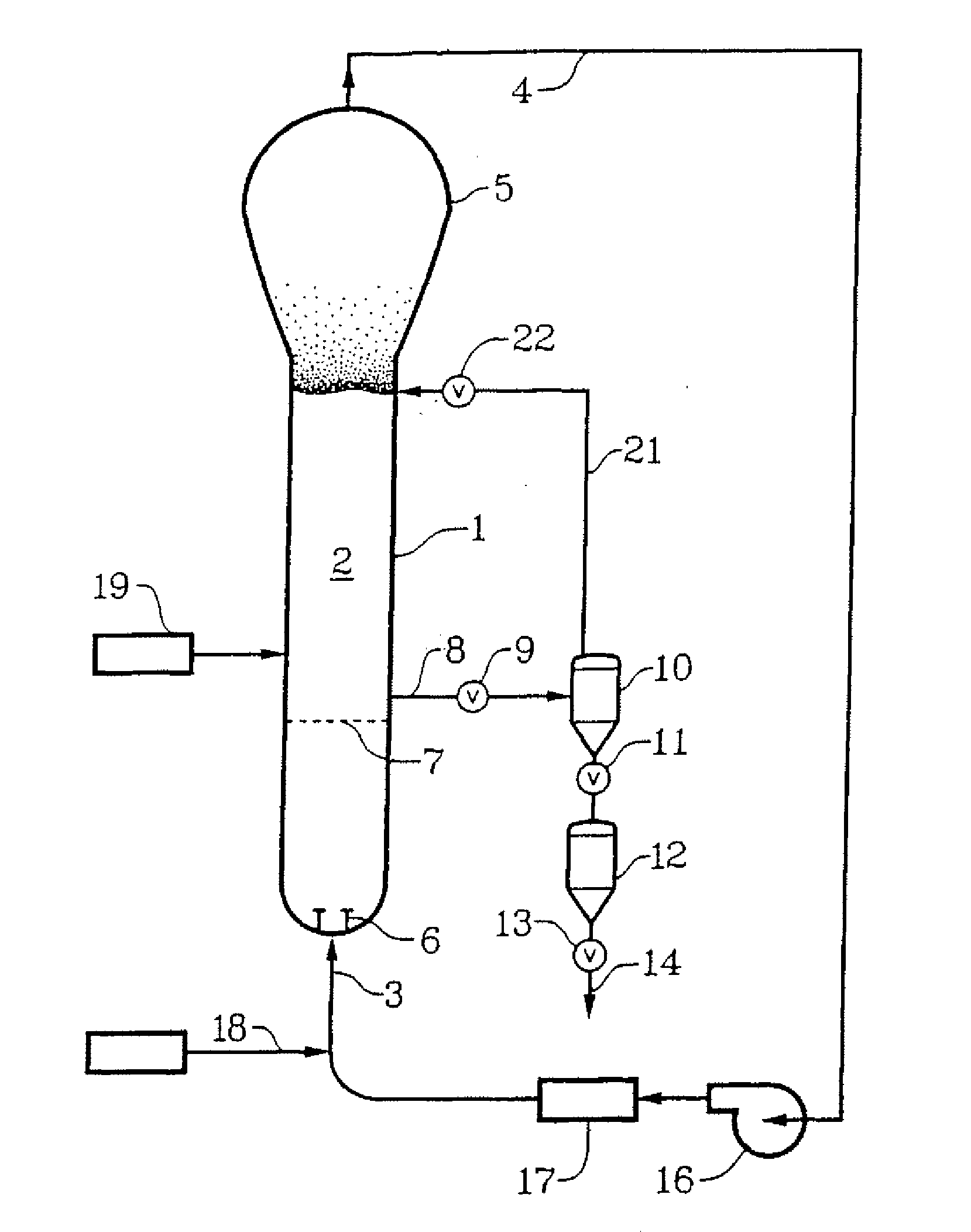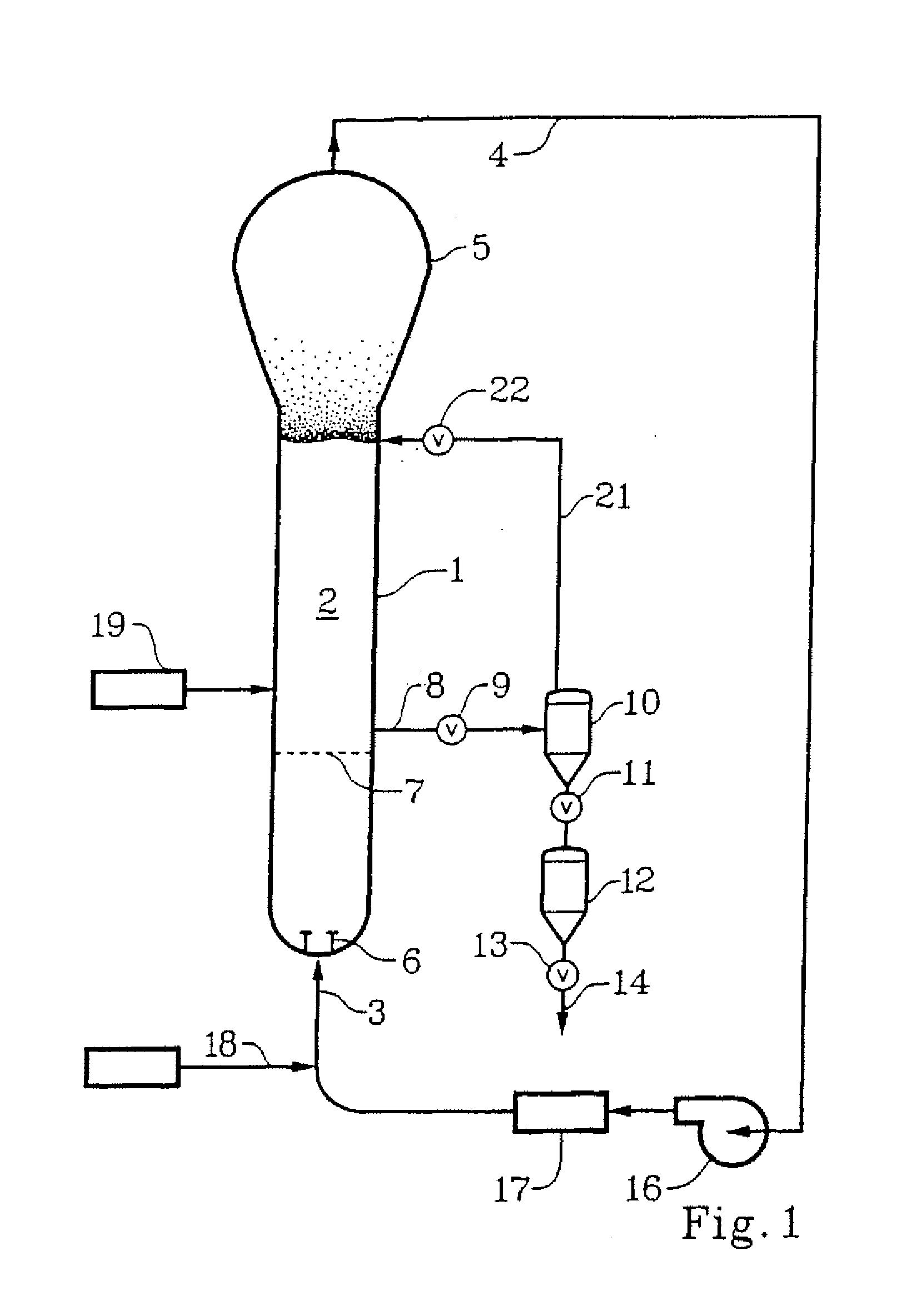Method for polymerizing polypropylene
a polypropylene and polymerization technology, applied in the field of polyolefin production, can solve the problems of inefficiency, inoperable, and inability to allow the temperature of the vessel to increase, and achieve the effects of avoiding the risk of reactor fouling, high catalyst activity, and reducing investment and operation costs of polypropylene manufactur
- Summary
- Abstract
- Description
- Claims
- Application Information
AI Technical Summary
Benefits of technology
Problems solved by technology
Method used
Image
Examples
examples
[0073]The following Examples were run to demonstrate the advantages in terms of catalyst consumption and pressure reduction obtainable by using the method of the present invention in two different catalyst systems.
ExampleComp. AA1A2Comp. BB1B2CatalystZ-N (see U.S. Pat.Z-N (see U.S. Pat.No. 5,317,036)No. 5,604,172)Donor95% DBS (di-n-butyl sebacate) + 5% “C Donor”(methylcyclohexyldimethoxysilane)ReactorGas-Phase Fluidized-Bed Unipol Reactor, 18.25 ftdiameter, 65 ft straight section heightProductPolypropyleneRandom Ethylene-HomopolymerPropylene CopolymerProduction5050Rate(Ton / hr)Reactor T727272657272(° C.)Reactor P490375300450375300(psig)Gas Composition (mol %)propylene77.2380.7779.3766.1378.8579.37hydrogen0.310.320.320.260.310.31propane9.6112.6913.6113.5112.6213.28nitrogen12.856.226.719.087.015.83ethylene0001.011.211.22Dew Point64.758.748.655.657.448.6(° C.)Bed - Dew7.313.323.49.414.623.4(° C.)Residence1.01.952.001.092.112.15Time (hr)Catalyst100%75.4%86.0%100%68.9%75.0%consump-tion*
[0...
PUM
| Property | Measurement | Unit |
|---|---|---|
| temperature | aaaaa | aaaaa |
| total pressure | aaaaa | aaaaa |
| reactor temperature | aaaaa | aaaaa |
Abstract
Description
Claims
Application Information
 Login to View More
Login to View More - R&D
- Intellectual Property
- Life Sciences
- Materials
- Tech Scout
- Unparalleled Data Quality
- Higher Quality Content
- 60% Fewer Hallucinations
Browse by: Latest US Patents, China's latest patents, Technical Efficacy Thesaurus, Application Domain, Technology Topic, Popular Technical Reports.
© 2025 PatSnap. All rights reserved.Legal|Privacy policy|Modern Slavery Act Transparency Statement|Sitemap|About US| Contact US: help@patsnap.com



